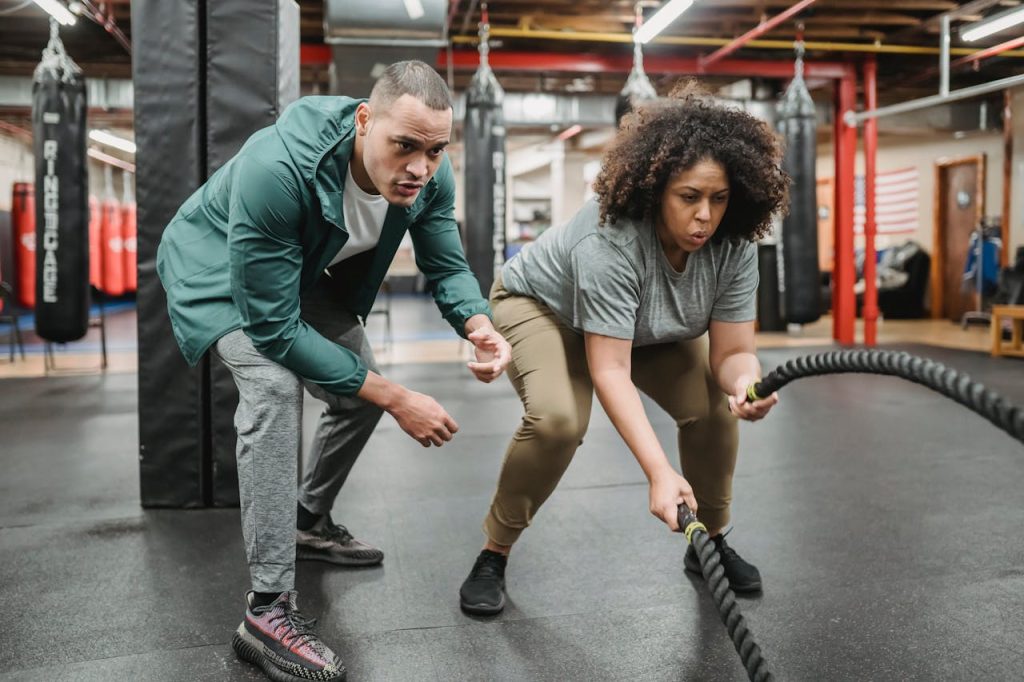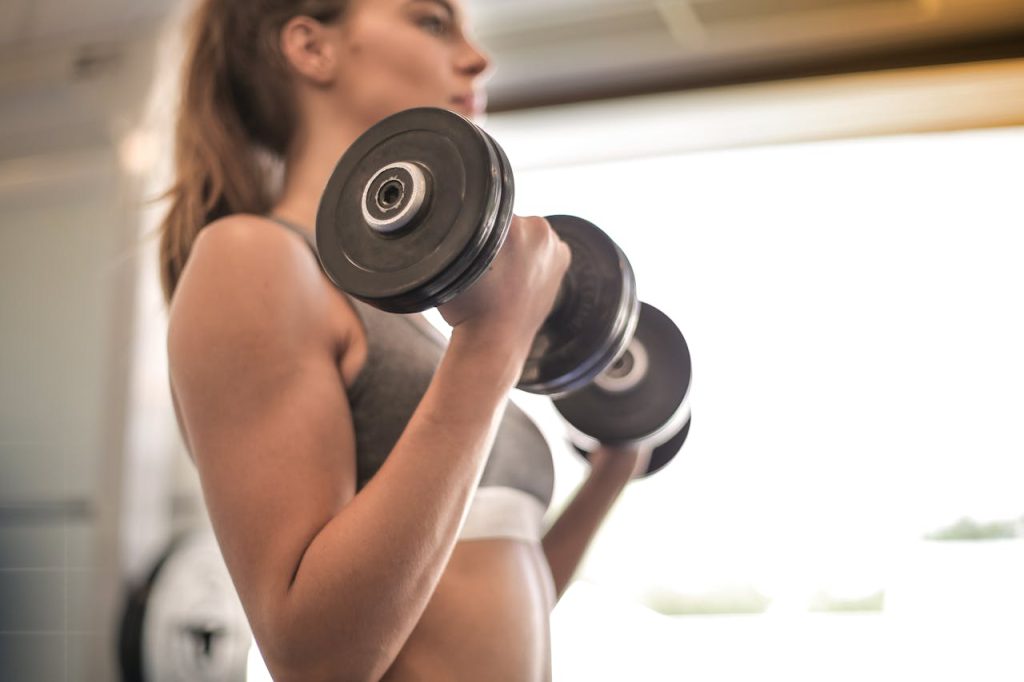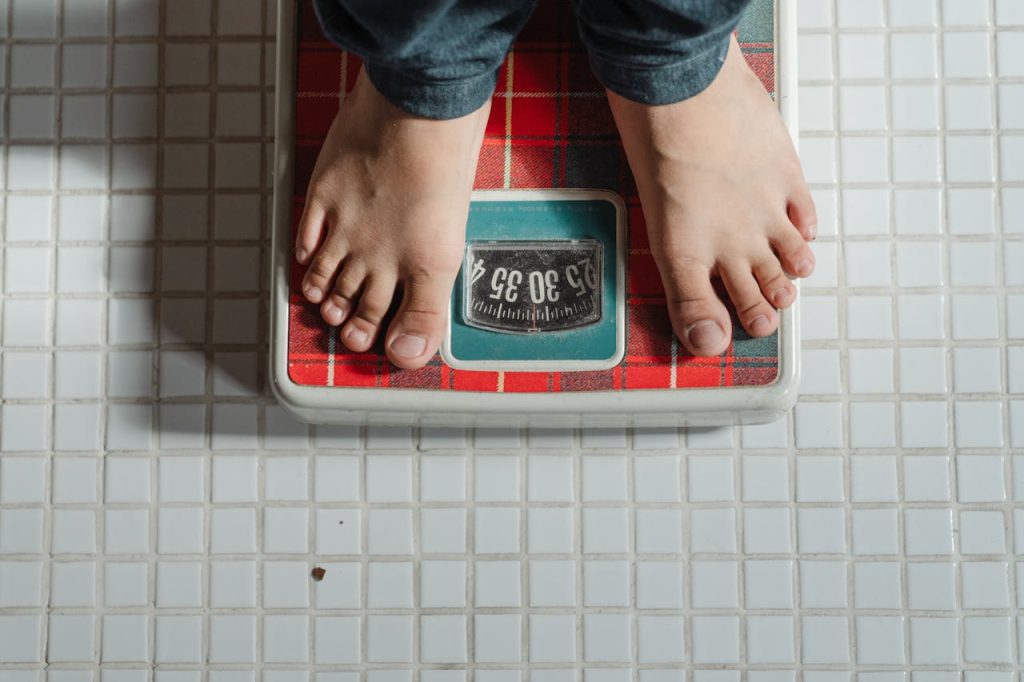Nutrition after 50 is everything when it comes to how energetic you feel each day and your weight trajectory. As your body matures, you could experience changes in how you metabolize food, burn calories, and hold onto fat. Certain foods begin to work FOR you, and others begin to work AGAINST you or weigh you down. You begin to require more protein, fiber, and healthy fats, and sugar and salt become less of a friend. Your body needs more water and fewer empty calories. Finding the mix that works for you keeps you sharp and active. In the meat of it, you’ll discover concrete tips and actual food selections that suit your post-50 requirements and objectives.
Key Takeaways
- Calibrate your calorie intake and exercise to your body’s slower metabolism and evolving energy requirements following age 50.
- Strength training and higher protein should be your priorities to help preserve muscle mass and a healthy metabolism.
- Prioritize a balanced diet rich in fiber, healthy fats, and essential micronutrients to aid digestion, maintain bone health, and support overall well-being.
- Eat to stabilize — what, when, and how plan your meals and snacks for steady energy and weight control.
- Hydrate with water and hydrating foods during and post-workout.
- Be present with your meals, get good sleep, and control stress.

Your Body’s New Blueprint
At approximately 50, your body begins operating on a new blueprint—a new set of rules that alter how you store energy, how you maintain a healthy diet, and how you exercise to achieve a healthy body weight and remain strong. Evolution provided you with methods for health promotion and energy equilibrium, but current dietary options and stress disrupt that balance, enabling the body to convert energy into fat storage with little resistance while sacrificing lean muscle mass. Oh, and your genetics, your training, and your daily habits—what works for one person may not work for you. Understanding these changes helps you eat smarter and move better for long-term health.
Metabolic Shift
- Lower calorie needs are common after
- Begin by monitoring your weekly intake, then reduce by 200-300 kilocalories a day if your weight increases. Small, steady changes suit your slower metabolism.
- Your daily movement matters more. Sitting for hours, on the other hand, makes you burn fewer calories. Try to walk 30 minutes most days, take breaks to stretch or move around.
- Exercise can reboot your set point. Combine light cardio with strength training a couple of times per week. This keeps you energized and burning more calories, even while lying down!
- Record your food and beverage intake. Use a straightforward app or notebook. This keeps you honest and helps you identify foods that pack in too many calories or don’t have enough nutrients.
Hormonal Changes
Estrogen and testosterone are hormones that decline post-50. These changes can make you hungrier or desire sugar. That’s why consuming more fiber, healthy fats, and lean proteins helps you stay satiated and keeps cravings at bay.
Insulin resistance is more probable when you put on fat. Whole grains, beans, and leafy greens keep blood sugar steady. Avoid sweetened beverages and treats as often as you can.
Dietary Pattern | Effect on Hormonal Balance |
Low-carb | May lower insulin peaks |
High-protein | Can reduce hunger hormones |
Plant-based | Supports stable blood sugar |
High-fat (keto) | May have blunt appetite swings |
Sleep counts too. Under 5 hours a night can increase appetite, decrease metabolism, and make weight loss difficult. Strive for 7–8 hours and a consistent bedtime.
Muscle Loss
Muscle loss accelerates after 50, but strength training decelerates it. Just use light weights, bands, or even bodyweight moves twice a week to keep muscles working.
A protein-rich breakfast—think eggs, Greek yogurt, or tofu—helps repair and build your muscles. Distribute protein throughout the day, targeting around 1.2 grams per kilogram.
Sample resistance moves include squats, push-ups, or rowing. These maintain muscle strength and nourish your metabolism.
Monitor your progress with either a tape measure or photos every couple of months. This allows you to track progress beyond the scale.
Master Your Nutrition After 50
Balanced nutrition becomes even more important as you get older. Your metabolism slows, and your body shifts—less muscle, more fat, and even less water. That is, when and what you eat can influence your energy fluctuations and aid weight objectives. A reputable evidence-based eating plan emphasizes whole, nutrient-rich foods and mindful eating, such as halting when you’re approximately 80% full. Control your portions, and always make nutrient-rich decisions for your plate.
Nutrient-dense foods to add to your day:
- Fresh fruits (berries, apples, oranges)
- Leafy greens (spinach, kale, arugula)
- Legumes (beans, lentils, chickpeas)
- Whole grains (quinoa, brown rice, oats)
- Fish and lean poultry
- Nuts and seeds
- Low-fat dairy
- Olive oil
1. Prioritize Protein
As you age, maintaining lean muscle mass becomes crucial, and high-quality protein sources like fish, eggs, poultry, tofu, and beans should be part of your daily diet. Aim for about 1 gram of protein per pound of body weight daily, which is vital for healthy aging and reducing muscle loss, especially in elderly women. Nibble on Greek yogurt, cottage cheese, or a handful of nuts, and consider protein powders or supplements if you struggle to meet your nutrient needs.
2. Focus On Fiber
To support a healthy diet, try increasing the intake of whole grains, fruits, and vegetables for fiber. Women over 50 require a minimum of 21 grams a day, while men need 30 grams. Fiber aids digestion and helps maintain a healthy body weight, thus preventing constipation. It keeps you feeling full, which can assist with your weight loss journey if you’re inclined to overeat. Include oats at breakfast, beans at lunch, and lots of greens at dinner.
3. Choose Smart Carbs
Choose complex carbohydrates such as brown rice, quinoa, and starchy vegetables to provide consistent fuel for a healthy diet. Easy sugars and refined foods spike blood sugar and add empty calories. Balance your carbs with important nutrients like protein and some fat for a complete meal, supporting healthy eating habits.
4. Embrace Healthy Fats
Healthy fats count for your heart and support a healthy diet by keeping you feeling full. Introduce avocado into your salads, munch on walnuts, or cook with olive oil to enhance your daily meals. Omega-3s from fatty fish or flaxseeds may reduce inflammation, contributing to disease prevention. Cut back on processed foods saturated with fat, and avoid trans-fat where possible for better overall health.
5. Target Key Micronutrients
To support healthy eating and maintain strong bones, pay special attention to calcium and vitamin D, which are important nutrients that reduce fracture risk. Dairy, tofu, and leafy greens are all good sources, while a rainbow of fruits and veggies aids in achieving a diverse blend of essential nutrients.
The Timing Of Your Meals
After age 50, maintaining a healthy diet by watching when you eat can keep your energy high and enhance your weight loss efforts. The timing of your meals and snacks can significantly impact blood sugar, appetite, and how your body processes calories. Eating earlier can improve your vitality and help manage your appetite. By strategically timing your meals, you can avoid major blood sugar dips and spikes, which are crucial for maintaining steady energy levels throughout the day. This approach is vital for managing your weight and optimizing your metabolism in relation to your exercise routine.
Energy Distribution
If you desire consistent energy, aim to distribute your calories evenly among breakfast, lunch, and dinner. Research indicates that consuming the majority of your calories earlier in the day can aid in weight loss and help maintain a healthy body weight by reducing hunger and cravings at later meals. For instance, those who consumed bigger breakfasts (700 kcal) and smaller dinners (300 kcal) lost more than twice as much weight compared to those who had smaller breakfasts and larger dinners, highlighting the importance of a balanced diet plan.
Pay attention to your own hunger signals. Some individuals thrive on three meals, while others pair it with one or two snacks. Late eating can slow your metabolism and make weight loss challenges more difficult, particularly if you’re genetically predisposed. Timing your meals to your physical activity can also enhance your diet quality.
Discover a meal rhythm that works for your lifestyle and culture – there’s not one “correct” approach to healthy eating. The key is to find a routine that supports your wellness goals and incorporates important nutrients for your overall health.
Pre-Activity Fuel
Before you go, have a light, carb + protein snack. This combo is a performance-enhancing powerhouse, particularly if you eat it 1–2 hours before exercise. Some options are: yogurt with fruit, a banana with nuts, or whole-grain toast with nut butter.
Experiment with various pre-workout meal timings. By all means, experiment and observe the effects. Water is crucial, too. Drink enough before you begin, because even mild dehydration can drain your stamina.
Post-Activity Repair
Post workout, reach for a protein + carb snack or meal. If you eat within 30 minutes, it can help your muscles recover faster and restock your energy. Consider choices such as eggs and whole-grain toast, lentil soup, or a fruit and yogurt smoothie.
Go for nutrient-dense foods, not just calorie-dense! Pay attention to how your body responds and recovers. Tweak your post-workout meal if you feel sore or low energy the following day.

Hydration Is Non-Negotiable
Hydration is non-negotiable for maintaining a healthy diet. Your body’s need for water doesn’t wane, but it’s easy to forget to drink. Dehydration can sneak up quickly, leading to serious consequences such as brittle bones and an increased risk of injury, particularly since dehydration can exacerbate osteoporosis. To make matters worse, your body’s thirst mechanism might not function as well, so you don’t even feel thirsty when you do need water.
Water doesn’t just quench your thirst; it also plays a crucial role in making your organs function properly, maintaining skin health, and lubricating your joints. If you’re looking to sustain energy and control your weight, water is essential. Many people find that drinking a glass of water before meals helps them eat less and feel satiated. This simple habit can assist in reducing additional calories and may even help increase your calorie burn slightly. Water also aids in digesting food and absorbing important nutrients, allowing you to extract more from your meals.
To avoid dehydration, it’s important to track your daily consumption, especially if you’re active or live in a hot environment. Most adults aim for around 1.5 – 2L a day, but individual needs can vary. If you perspire heavily, you’ll naturally need to consume more to compensate for lost fluids. Consider setting phone reminders or keeping a water bottle within arm’s reach. Aim to drink beverages with food and sip on water throughout the day, not just when you feel thirsty.
Food contributes to hydration as well. Fruits like watermelon, oranges, and berries are water-dense, while cucumbers, lettuce, and tomatoes also enhance your fluid intake. Incorporating these healthy foods into your meals is an easy way to meet your hydration needs while promoting healthy eating habits at the same time.
Beyond Food: The Lifestyle Synergy
Fixating on nutrition alone is overlooking the broader picture of healthy aging. After 50, your energy, weight, and long-term health rely on more than just a nutritious diet. How you LIVE, MOVE, and REST in synergy molds to your state. Developing a healthy lifestyle—stable weight, no smoking, moderate drinking—can not only add years to your life but also support disease prevention. To stay strong and active, you need to address how you eat, sleep, and move—not just your plate.
Mindful Eating
Mindful eating is all about being attentive to your eating habits. When you slow down and actually taste your food, you realize when you’re satiated and make smarter decisions. This will help you cut off before you take in too much and prevent you from eating due to boredom/stress. A lot of people find it helpful to eat in a distraction-free zone—no screens, no phone—so you can really concentrate on your meal and listen to your body.
Taking a couple of minutes post-meal to just sit and bathe in your choices helps create healthier habits. You begin to recognize trends–which foods energize you, which weigh you down. In time, this self-check can usher you toward smarter fare, a crucial transition as your diet requirements evolve. Bad nutrition can manifest itself in a variety of ways, from low energy to vitamin and mineral deficiencies, which is why listening to your true requirements is more important than ever.
Quality Sleep
A consistent sleep schedule is essential for maintaining your metabolic and energetic equilibrium. Sleep becomes more elusive as adults age past 50, but inadequate rest can increase your blood pressure and damage your heart. Maintaining consistent bed and wake times allows your body to repair and rejuvenate.
Good sleep hygiene includes making your bedroom dark, quiet, and cool. Avoid late-day caffeine and screen time before bed. Pay attention to how your sleep influences your appetite—sleep deprivation will cause you to need junk food and overeat. Try easy relaxation techniques to help you fall and stay asleep, such as:
- Deep breathing exercises
- Gentle stretching or yoga
- Listening to calming music
- Meditation
Consistent Movement
Exercise Type | Key Benefits | Example Activities |
Aerobic | Heart health, weight control | Fast walking, swimming |
Strength | Muscle mass, bone strength | Bodyweight workouts, bands |
Flexibility | Range of motion, injury prevention | Stretching, yoga |
Balance | Fall prevention, stability | Tai chi, single-leg stands |
Discover movement you love—dance, garden, bike. Engage in a variety of activities to work different parts of your body and support healthy eating habits. Establish attainable targets, such as 30 minutes of brisk walking on 5 days each week, to promote a healthy body weight. Keep track of your progress, whether using a plain old notepad or a mobile app. Celebrate the little victories, like walking further or lifting more, as these victories can motivate you on your journey to healthy aging.
A Personalized Nutrition Approach
A personalized nutrition approach considers your age, health, and lifestyle so you receive a plan that’s tailored to you, not just a one-size-fits-all diet. This aids you in satisfying your needs for energy, fat loss, and long-term health. Research shows that when you eat according to your personal nutrition, you achieve better results than off-the-shelf diets. More of what you need, less of what you don’t, which can translate into more energy and easier weight management.
Tailor your nutrition plan to meet your unique health needs and goals. Start by looking at your age, weight, sex, and health. Maybe you’ve noticed you need more protein or calcium. Some people need extra vitamin D, while others may need to eat less sugar or fat. If you’ve lost muscle or feel tired, boost your dietary protein to 1.3–1.5 grams per kilogram of body weight each day. This small change can help you maintain lean muscle mass and lose excess body fat. If you have high blood pressure, a DASH diet with more fruits, veggies, and whole grains could help. Or if you want a heart-healthy plan, a Mediterranean diet is proven to work for many. Each dietary pattern, like plant-based or lower-carb, can be tuned for your needs and tastes.
Work with nutritionists to design a personalized diet. A dietitian can review your health, identify any deficiencies, and guide you towards healthy foods that match your cultural background and palate. They may recommend blood work to examine markers such as homocysteine, which provides insight into your cardiovascular and neurological status. With this info, you get a plan that fits your life and wellness goals — not just what’s trendy.
Tweak your eating plan according to your own needs. If you travel a lot, you may require simple nourishment such as nuts or protein bars. For the culinary inclined, experiment with new recipes from the Mediterranean or DASH diets. Be flexible—what works now may need to evolve as your schedule or health changes.
Check your progress and fine-tune your nutrition approach. Check back every few weeks. If you lose momentum or experience no difference, adjust your plan. Routine check-ins with a nutritionist or app tracking can help you identify what’s working and what needs correcting.

Conclusion
Your body transforms after 50, but your motivation to feel powerful and vibrant does not. Eating more fresh fruits, lean meats, and whole grains provides your body with steady fuel. Little meals throughout the day maintain your energy and control your appetite. Water keeps every cell functioning better and keeps you cognitively sharp. Good sleep, fresh air, and light walks get your food to work for you. Your needs might appear a little different from your friends or family, and that’s okay. Easy changes with huge effects. Experiment with a recipe or adjust your meal plan. Discuss with your physician or dietitian the best tips for you. Your next step counts.
Frequently Asked Questions
1. What Nutrients Are Most Important For Energy After Age 50?
Prioritize important nutrients like protein, fiber, healthy fats, and micronutrients such as B vitamins, vitamin D, and iron to support healthy eating and muscle strength.
2. How Can I Lose Weight Safely After 50?
Consume balanced meals, manage portion sizes, and emphasize healthy foods while maintaining a consistent exercise routine. Steer clear of crash diets for real results in your weight loss journey.
3. Does Meal Timing Matter For Energy And Weight Loss?
Yes. Meals and snacks eaten at regular intervals support healthy eating and help maintain stable energy levels, contributing to healthy weight loss. Don’t skip meals.
4. How Much Water Should I Drink Daily After 50?
Shoot for that amount, so if you can get 1.5 to 2 liters a day. Staying hydrated can support healthy eating, boost your energy, and control your appetite.
5. Should I Avoid Carbohydrates To Lose Weight After 50?
Opt for whole grains and fiber-rich options to support healthy eating. Carbs provide important nutrients for energy and keep your mind sharp.
6. Is It Harder To Lose Weight After 50?
Yes, metabolism does slow with age, but with a nutritious diet, regular physical activity, and healthy eating habits, you can still achieve your wellness goals.
7. How Can I Personalize My Nutrition After 50?
Consider your activity level, health issues, and preferences while discussing your goals with a registered dietitian to create a personalized healthy eating plan.
Start Your Journey To Lifelong Health And Confidence With Fitness Ellipsis!
Are you ready to embrace a healthier, more active lifestyle in your golden years? At Fitness Ellipsis, we understand that successful weight loss isn’t just about the number on the scale; it’s about enhancing your energy, boosting your confidence, and empowering you to live fully and independently.
Our specialized Weight Loss Program for Seniors is thoughtfully designed to meet your unique needs. With expert guidance, personalized coaching, and gentle, effective exercises, we help you shed unwanted weight while improving mobility, balance, and overall wellness. Whether you’re new to fitness or looking to get back on track, our compassionate team will support you every step of the way.
Through customized nutrition strategies, age-appropriate workouts, and unwavering encouragement, we focus on sustainable results that keep you feeling vibrant, strong, and in control of your health. You’ll not only lose weight, you’ll gain freedom, energy, and a renewed zest for life.
Don’t wait to reclaim your well-being and vitality. Join the Fitness Ellipsis family today and take the first step toward a leaner, stronger, and more empowered retirement. Contact us now to discover how our weight loss program can transform your health and help you thrive today, tomorrow, and for years to come.
Disclaimer:
This article is for general informational purposes only and is not intended as medical or nutritional advice. Individual needs can vary based on age, health status, and lifestyle. Always consult a qualified healthcare provider or registered dietitian before making significant changes to your diet, exercise routine, or supplement regimen, especially if you have existing health conditions or take prescription medications.




